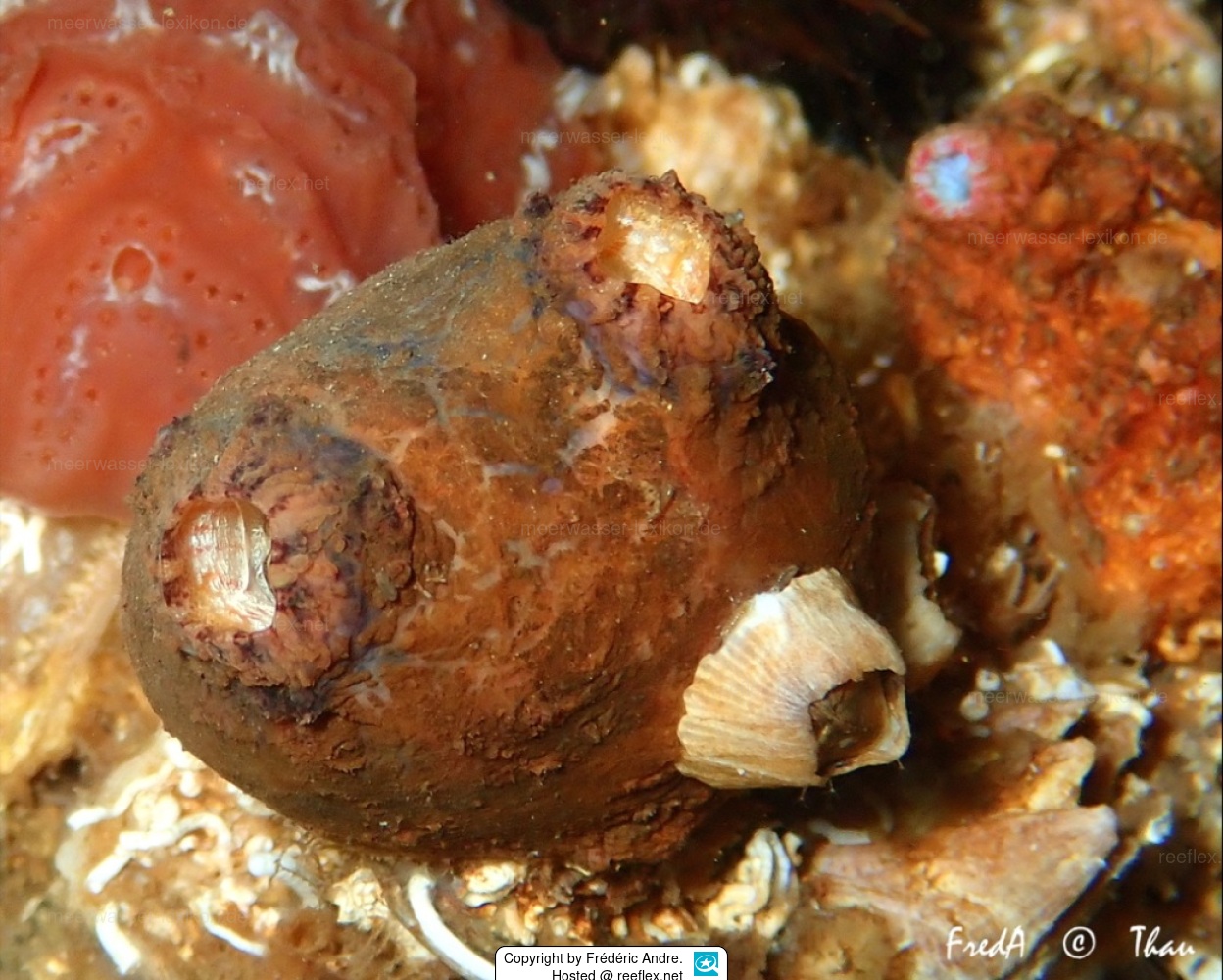Info
When researching this sea squirt, the first thing that stood out was that Microcosmus squamiger is described as both “solitary” (SeaLifeBase) and “gregarious” (AquaNIS).
Various photos on iNaturalist and Atlas of Living Australia show both forms of behavior.
Microcosmus squamiger prefers shallow, rocky coastal habitats with a continuous current caused by wave motion, which provides the sea squirt with sufficient nutrients.
Description
Microcosmus squamiger is a spherical, elongated to oval sea squirt that can grow up to 4 cm long.
The sea squirt has one inflow and one outflow opening, short, wart-like siphons
For such a small, seemingly delicate marine creature, the sea squirt has a leathery, tough, often hard and occasionally brittle outer tunic.
The sea squirt's color spectrum ranges from brown to reddish-orange and red, with chestnut-brown striped siphons. The animal is usually completely or partially covered with epibionts (algae or barnacles).
The inner tunic is significantly softer and has violet tones.
The sea squirt is a hermaphrodite; both eggs and sperm are released into the water column for reproduction, where fertilization and embryonic development take place.
The reproductive potential is very high, and the embryos hatch as larvae that do not feed and must settle within a few hours before their own energy reserves are depleted. The transfer of ballast water is an unlikely route of introduction
This sea squirt is an invasive species that originated in Australia but is now found worldwide in temperate waters, where it competes with native species such as mussels.
Etymology: The genus name comes from the Latin “microcosmus,” from the Greek “mikros” meaning “small.”
The genus name ‘Microcosmus’ means “small universe” and refers (probably) to the fact that the sea squirt is a miniature world unto itself.
Various photos on iNaturalist and Atlas of Living Australia show both forms of behavior.
Microcosmus squamiger prefers shallow, rocky coastal habitats with a continuous current caused by wave motion, which provides the sea squirt with sufficient nutrients.
Description
Microcosmus squamiger is a spherical, elongated to oval sea squirt that can grow up to 4 cm long.
The sea squirt has one inflow and one outflow opening, short, wart-like siphons
For such a small, seemingly delicate marine creature, the sea squirt has a leathery, tough, often hard and occasionally brittle outer tunic.
The sea squirt's color spectrum ranges from brown to reddish-orange and red, with chestnut-brown striped siphons. The animal is usually completely or partially covered with epibionts (algae or barnacles).
The inner tunic is significantly softer and has violet tones.
The sea squirt is a hermaphrodite; both eggs and sperm are released into the water column for reproduction, where fertilization and embryonic development take place.
The reproductive potential is very high, and the embryos hatch as larvae that do not feed and must settle within a few hours before their own energy reserves are depleted. The transfer of ballast water is an unlikely route of introduction
This sea squirt is an invasive species that originated in Australia but is now found worldwide in temperate waters, where it competes with native species such as mussels.
Etymology: The genus name comes from the Latin “microcosmus,” from the Greek “mikros” meaning “small.”
The genus name ‘Microcosmus’ means “small universe” and refers (probably) to the fact that the sea squirt is a miniature world unto itself.







 Frédéric Andre, Frankreich
Frédéric Andre, Frankreich






